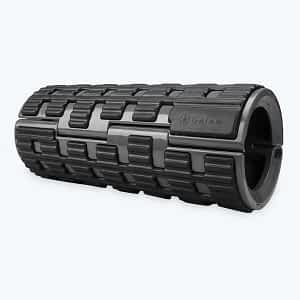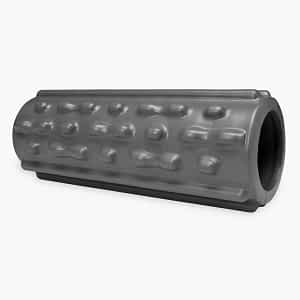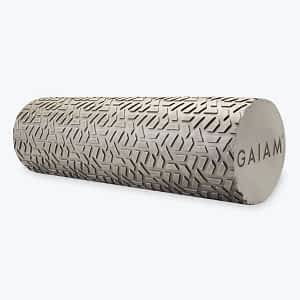If you’re like me, you often feel short on time. Sometimes you have the chance to fit in a workout, sometimes you don’t. When you do have the chance to exercise, you’re focused on getting in a good run or strength training session. Not necessarily incorporating different types of stretching exercises. You want to sweat, breathe heavily, and maybe be sore the next day. If you do these things, you feel like you made the most efficient use of your time. Sound familiar?

I know I’ve done this a hundred times. Guilty. I’ve ran in the gym, jumped right on a machine, and gotten straight to work. But you know what I missed? Stretching. And I’m sure you’ve done this too. While it can be super tempting to rid stretching from your workouts when you’re short on time. It is important to RESIST THE URGE!
The bottom line
Stretching is one of the most important parts of exercise. Because through stretching you can achieve flexibility. If you are flexible, your body can move efficiently through full range of motion. And if you can move efficiently, you can exercise and do everyday tasks without pain.
Flexibility is important for clients of ALL ages and experience levels. And it is arguably the most important component of exercise. But, it can be difficult to achieve and sustain over time. It is something you have to work at and practice. It is also a skill that if you don’t practice, you can easily lose.
So, I encourage my clients to incorporate stretching into their everyday routine. Even if it is just a few minutes each day.
Every workout should incorporate flexibility.
There are three main types of stretching:
- Foam Rolling,
- Static Stretching
- Dynamic Stretching
Each serves a purpose and is recommended at different times for different people.
Different Types of Stretching: How to stretch:
Foam Rolling:
To foam roll, place your muscle over the foam roller with light to moderate pressure. Make small back and forth movements on the foam roller (area of 2-6 inches). Roll each section for about a minute. This helps loosen underlying muscles to improve range of motion.
After you foam roll, move to static stretching in that same area.
Static Stretching:
Perform the movement until you feel the tension on your muscles. Hold each stretch for 15 to 60 seconds and repeat 3-5 times for optimal results. Make sure to hold each stretch for at least 15 seconds. It takes about 10 seconds to reach the point where your muscle begins to relax and you can stretch a bit further.
Static stretching helps lengthen muscles and improve range of motion.
Dynamic Stretching:
A dynamic stretch is an active movement that takes a body part through a range of motion. Sets and reps for dynamic exercises vary. On average, you will perform 2 sets of each exercise for approximately 10 reps. Examples of dynamic stretches are arm circles, leg swings, and neck rolls.
Types of Stretching – When to Stretch
So, you now know it’s important to stretch and that it’s recommended to stretch every day. You also know about the three most common types of stretching. But when is it best to complete these stretches?
- Before a workout, foam roll and do some static stretching. If you are an athlete or already have good flexibility, add dynamic stretches to your warm-up.
- During your workout, incorporate dynamic stretches. For example, arm circles between military presses or leg swings before a set of lunges.
- End your workout with light static stretching and foam roll. This can help reduce muscle soreness as well!
Keep reading for more best practices when stretching.
Types of Stretching – Finding the Time
If you’re not supposed to “cut” stretching from your workout – how do you find the time to fit it in?
Stretch before and after workouts
Incorporating these types of stretching exercises can make a huge difference! And stretching doesn’t have to take 15 or 20 minutes.Consider picking five stretches at the beginning of your workout and five at the end of your workout. The next day, choose different exercises so you stretch different muscles.
Stretch on your “off days”
On your “off days,” when you aren’t strength training, stretch for longer periods of time. For example, say you strength train four times a week for 30 minutes at 5 pm. The other three days per week, use that time to complete a longer stretching routine. I usually find I can get in a good stretch that addresses all muscle groups in about 20 minutes.
Stretch before bed
Many of us are guilty of watching TV or laying in bed scrolling through our phones before we fall asleep. Instead, try using that time to listen to calming music while stretching. I usually dim the lights and lay a yoga mat at the foot of my bed. I do some light static stretching each night to some of my favorite music. This puts me in a positive and relaxing space before bed. Making this positive change in my life has not only improved my flexibility but my sleep as well. A win-win!
Over time, finding the time to stretch will help you stay mobile and improve flexibility.
Getting Started with these types of Stretching Exercises
Now is a great time to get started! You are motivated, educated, and capable. Give these types of stretching exercises a try today. And if you’re looking for some extra guidance or stretching ideas – let us know! We’d love to hear from you.
- 5 Signs You Need Self Care In Your Life.
- Self Care for Anxiety- 5 Simple Steps to Conquer Stress
- Manage Stress Naturally With Meditation: 7 Simple Steps to Meditate for Anxiety Relief
- 9 Easy Ways to Support Your Friends Business (And Get To Know Their Work)
- 6 positive choices you can make today for a better tomorrow.




